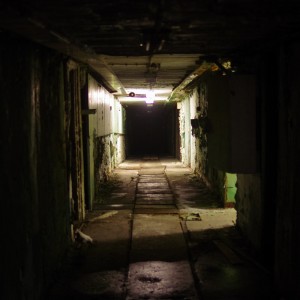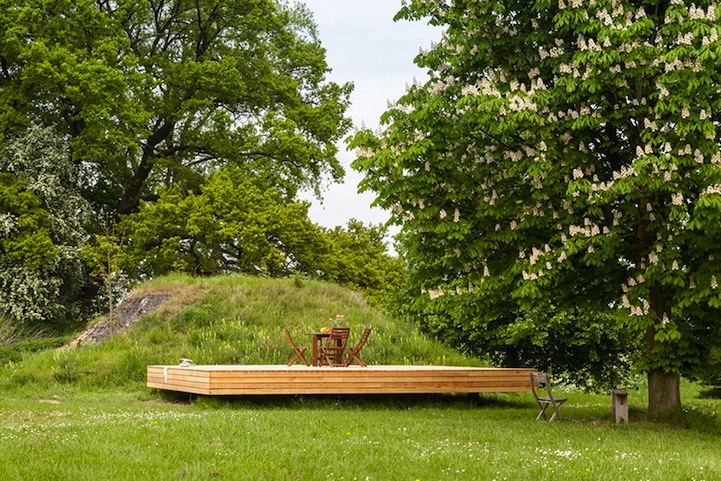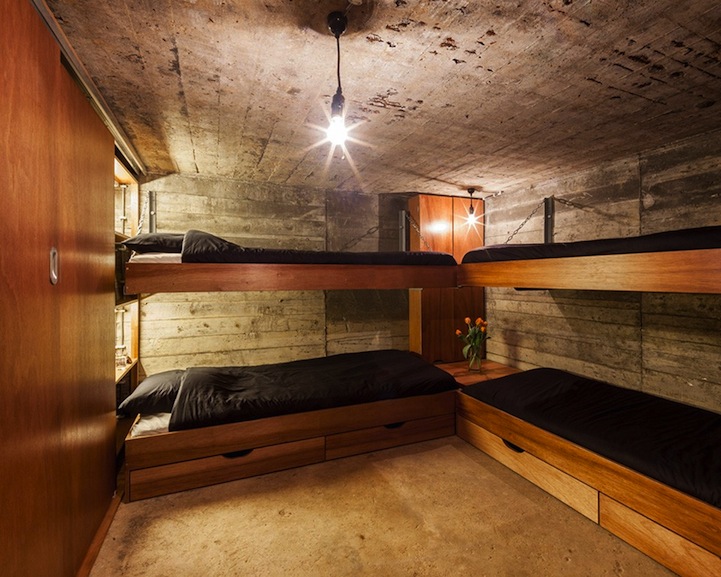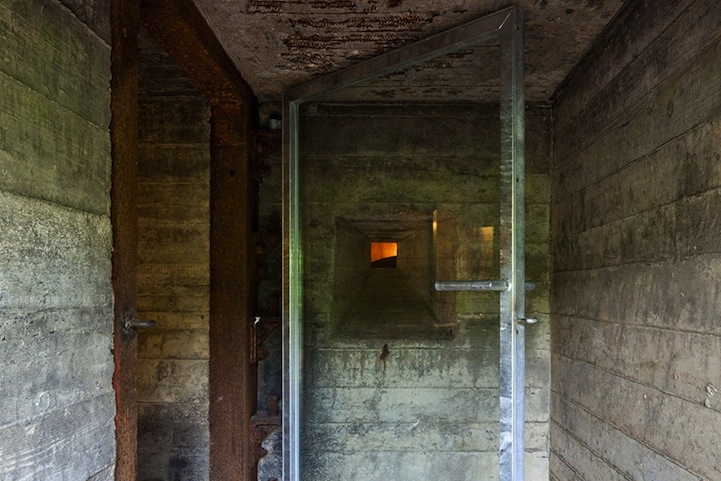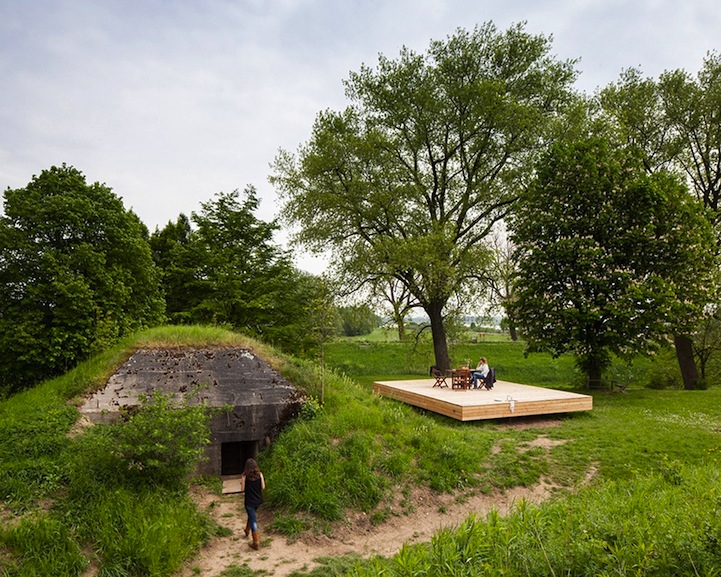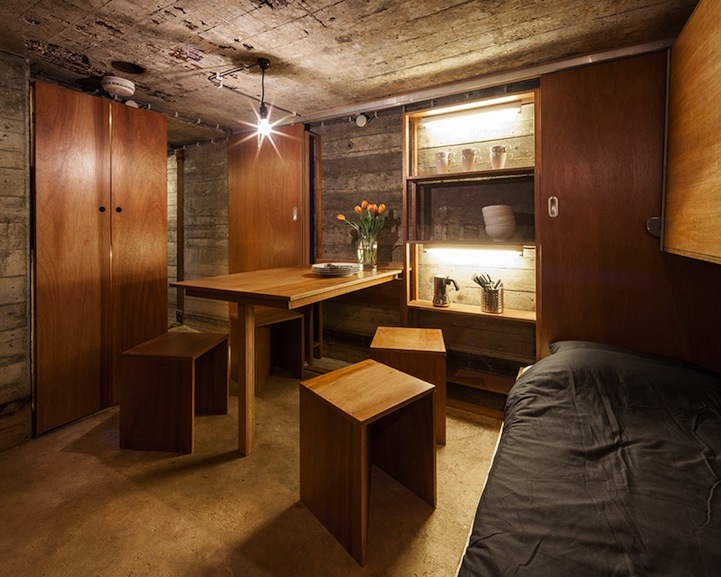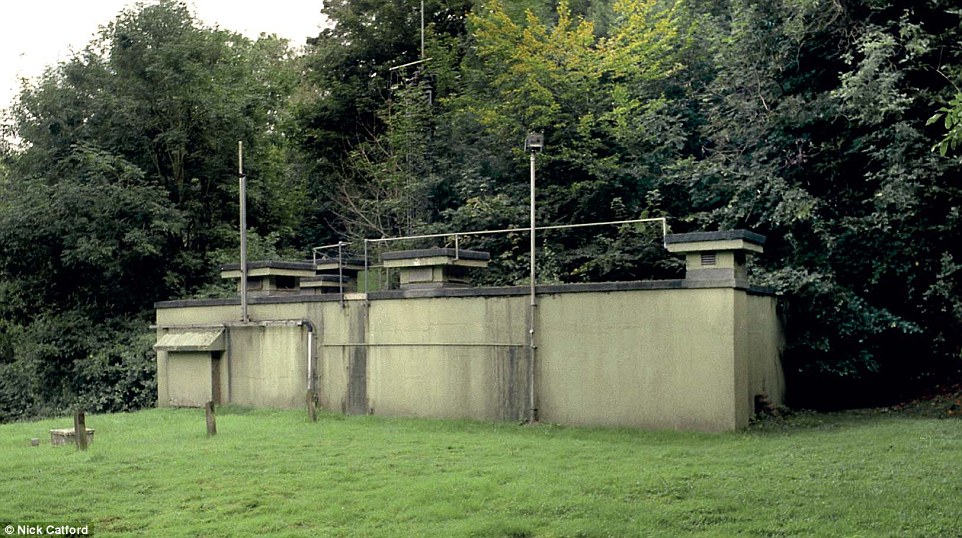
Secret history:
Britain's 29 Royal
Observer Corps HQs
once held 70
volunteers each who
would have helped
rebuild Britain
after a nuclear war.
This one, nestled on
a hillside in Yeovil,
Somerset, lay empty
and derelict for
years (pictured) -
and has now become a
five-bed eco-house
•
Each of the 29 Royal
Observer Corps HQs
had metre-thick
concrete walls and
could hold up to 70
volunteers
• Fortresses had
dormitories,
canteens, radio
rooms, generators,
toilets, air
filtering and
decontamination
posts
• One in Yeovil,
Somerset, is now a
£700,000 house.
Another became
16-room recording
studio costing
£140,000
• But almost half
have already been
demolished and there
are few laws to stop
others being
destroyed too
• Heritage expert: 'There’s
been a massive Cold
War nostalgia
revival. Destroying
more would be a huge
shame'
• Wider network also
had 11 seats of
government -
including two now
restored - and
hundreds of
monitoring posts
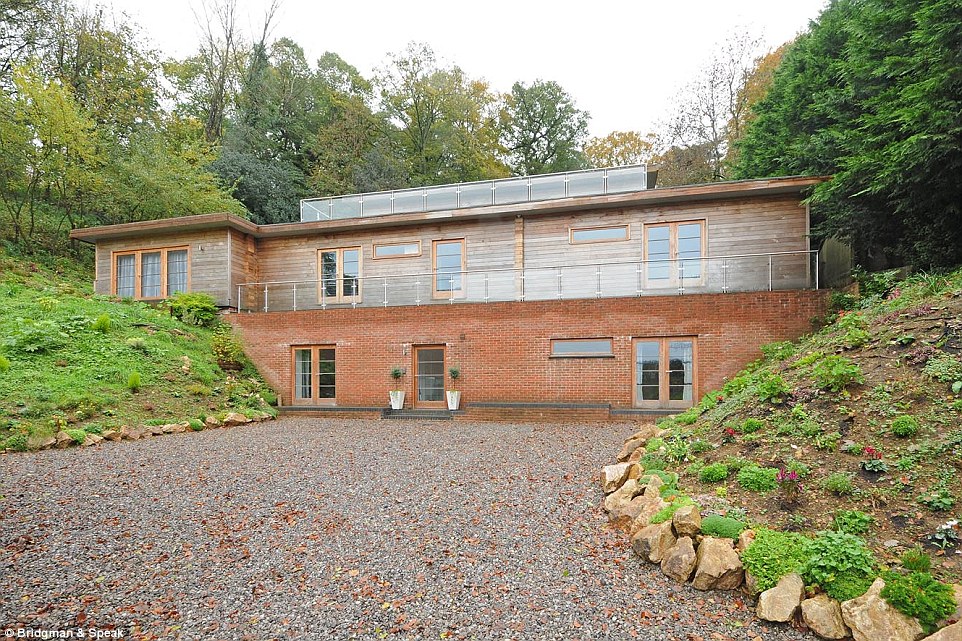
Unrecognisable: The
house which was made
from the Yeovil
bunker in 2009 is
now on the market
for almost £700,000
and even includes a
gym
By DAN BLOOM
These Cold War
bunkers are where
volunteers spent 30
years planning for
nuclear annihilation
- and they're now
everything from
houses, vets'
surgeries and a
recording studio to
a laser tag arena.
Each of Britain's 29
Royal Observer Corps
(ROC) headquarters
held 70 volunteers
who would have
helped rebuild a
post-atomic Britain
from behind
metre-thick concrete
walls with three
weeks' food in
packet rations.
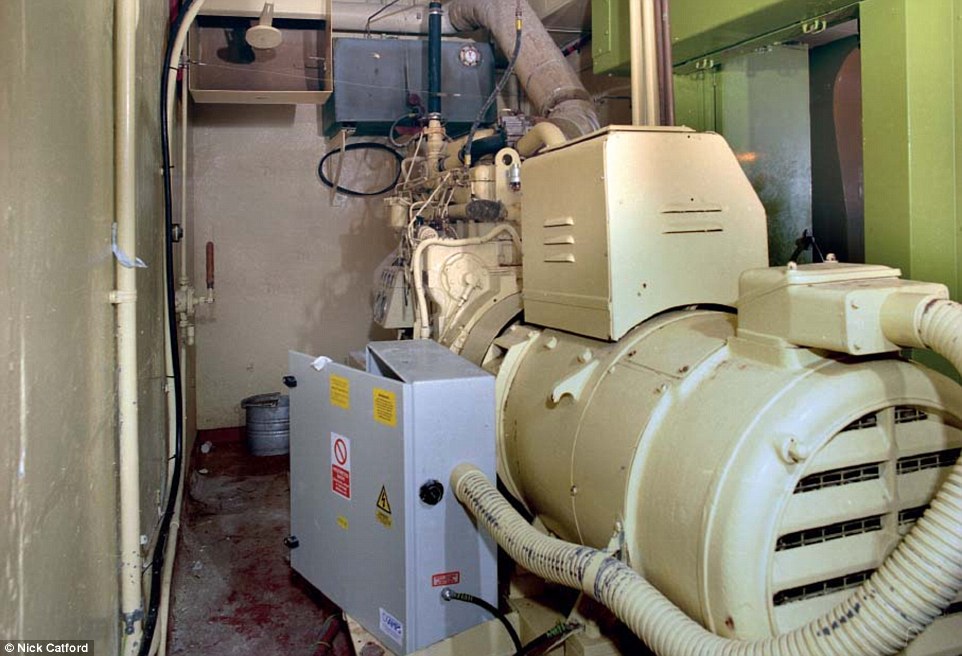
History: How the
inside of the Yeovil
bunker looked before.
Each ROC HQ had a
generator room, air
filtering and a
decontamination unit
Mercifully the
sprawling stations
with bedrooms,
canteens, generators
and decontamination
rooms never served
their intended
purpose - but they
have been put to
novel uses instead.
One bunker in Exeter,
Devon, has been
turned into a
post-apocalyptic
laser tag arena
while another in
Yeovil, Somerset,
has become a
five-bedroom
timber-clad
eco-house - which is
now on the market
for almost £700,000.
Nestled into the
side of a hill, it
was converted after
years of laying
derelict and being
broken into by
explorers and the
homeless. The entire
bunker's ventilation
system was
overhauled and is
now being used to
make the house more
energy efficient.
Named Observatory
House, it is barely
recognisable as a
bunker but has one
big advantage: a
staggering 8,000
square feet of
living space over
four floors
including its five
bedrooms, three
reception rooms and
a large gym.


More
comfortable: The
newly-built house
offers a few more
home comforts and
fewer foil-packed
government rations
than its previous
form
Bunking down: One of
the former Yeovil
bunker's five
bedrooms, with
barely a nod to the
site's secret Cold
War past. It is just
one bunker that has
found an unusual new
use - others include
a recording studio,
a laser tag arena, a
vets' surgery and a
mock house for
police training.
It is not the only
grand design. A
music-lover spent
£140,000 converting
one bunker in north
Wales into a
recording studio
which has remixed
tracks for Rihanna
and Kylie Minogue.
Another in
Shrewsbury,
Shropshire, houses a
vets’ surgery inside
the original
concrete shack -
though the staff
never venture down
the hatch.
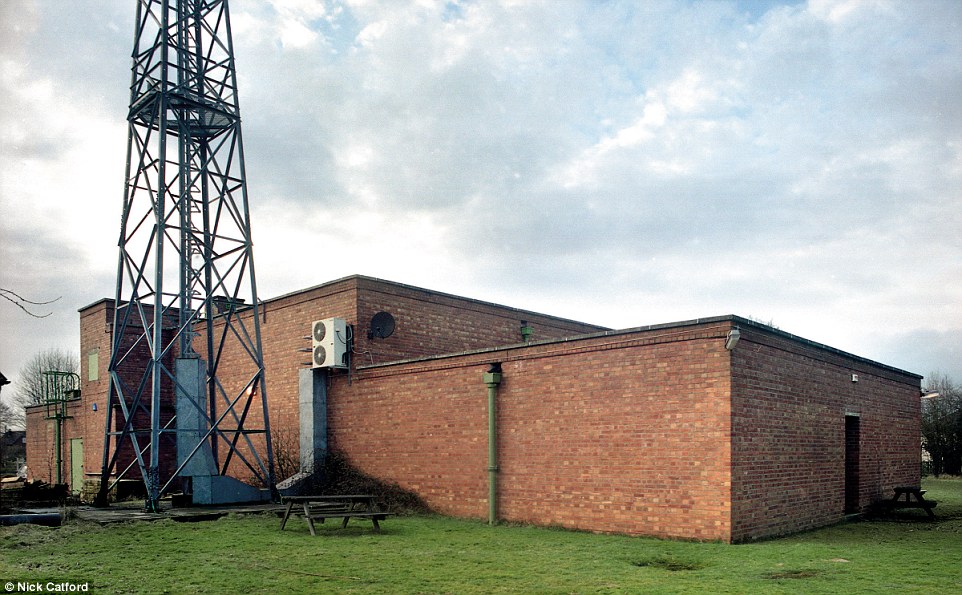
 Before:
This bunker in
Borras, North Wales,
was riddled with
damp when musician
David O'Connor
bought it almost a
decade ago
Before:
This bunker in
Borras, North Wales,
was riddled with
damp when musician
David O'Connor
bought it almost a
decade ago
After: The Borras
bunker is now a full
recording studio
with 16 rooms... and
natural
soundproofing in the
form of metre-thick
concrete walls
Oxford's is intact
under student halls,
Lincoln’s has become
a mock house for
police training and
Belfast’s is used by
the Army.
Just one of the ROC
headquarters of its
kind is open to the
public thanks to
English Heritage,
which took ownership
of a site in York
amid soaring demand
for Cold War
nostalgia.
It reopened as a
full tourist
attraction in 2006
and now has between
5,000 and 10,000
visitors a year. At
the moment it is
only open on Sundays,
but will also open
on Fridays and
Saturdays from
spring 2015.
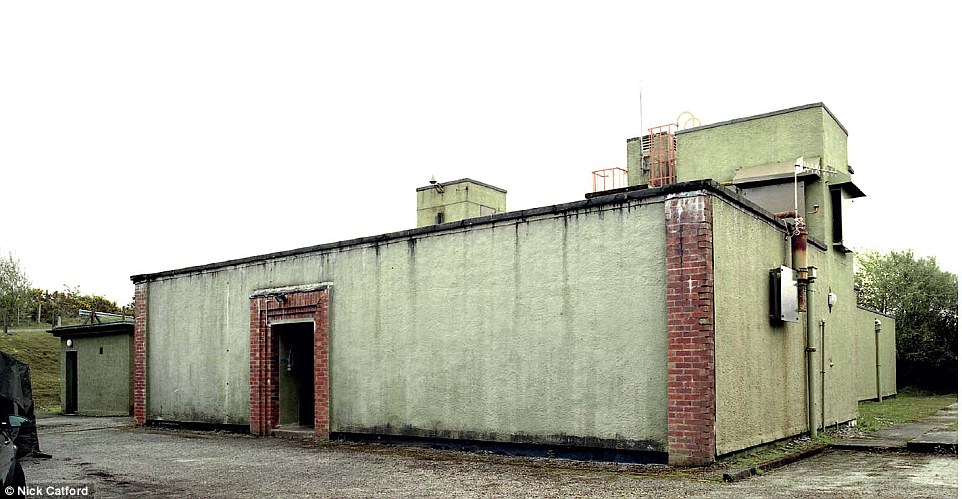
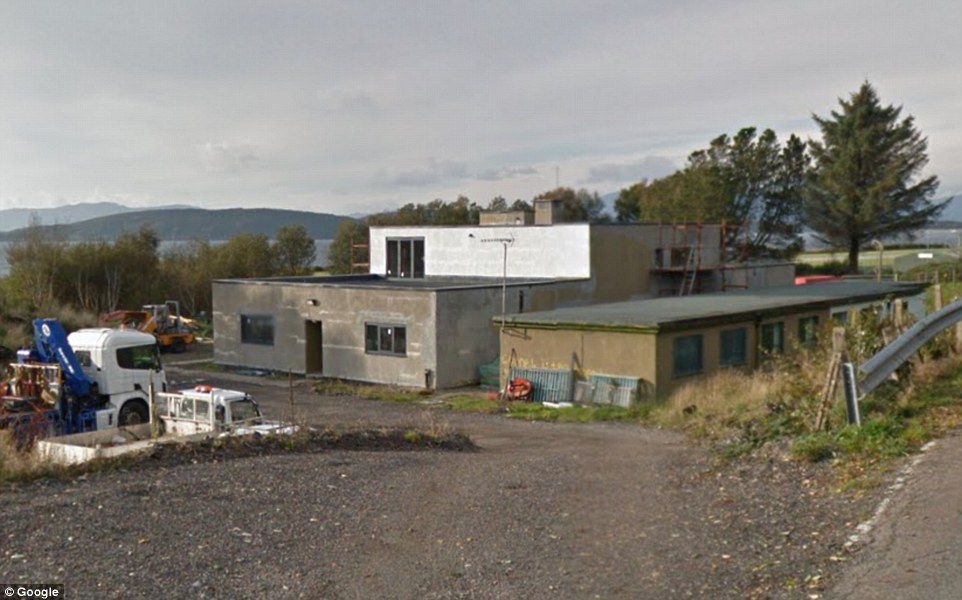 Fortress:
This bunker in Oban,
Argyll and Bute, is
now being turned
into a house near
the Western Isles
gateway town's
Ardmucknish Bay
Fortress:
This bunker in Oban,
Argyll and Bute, is
now being turned
into a house near
the Western Isles
gateway town's
Ardmucknish Bay
Conversion: How the
bunker looked in
October, when
builders were
halfway through
turning it from
hostile concrete
hole to family home
The 29 ROC
headquarters are
just a few of the
hundreds of Cold War
sites scattered
across Britain,
which fell into
several distinct
categories.
There were also 11
former 'regional
seats of government',
even larger bunkers,
including two which
have reopened as
tourist attractions
in Nantwich,
Cheshire, and
Brentwood, Essex.
Hundreds of much
smaller bunkers,
'monitoring posts',
still exist and some
have been reopened.
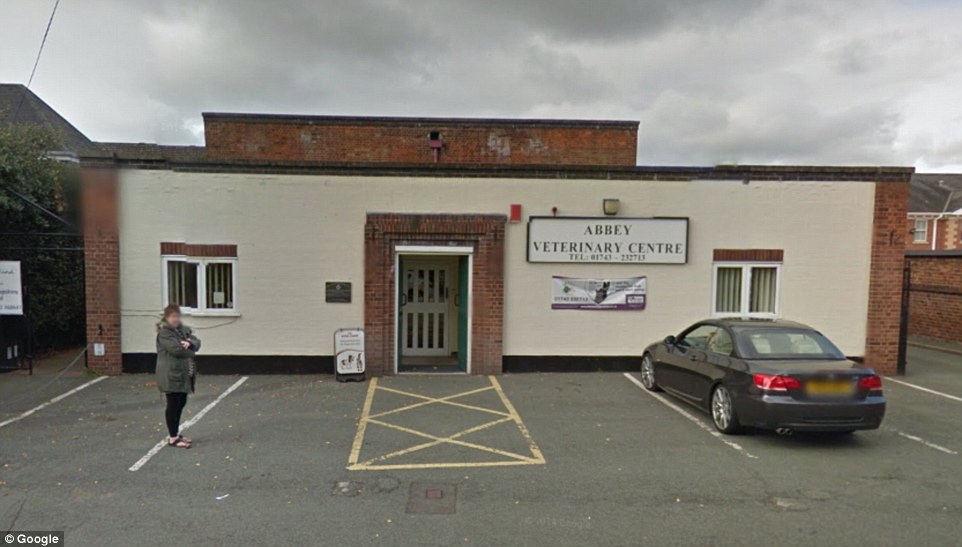
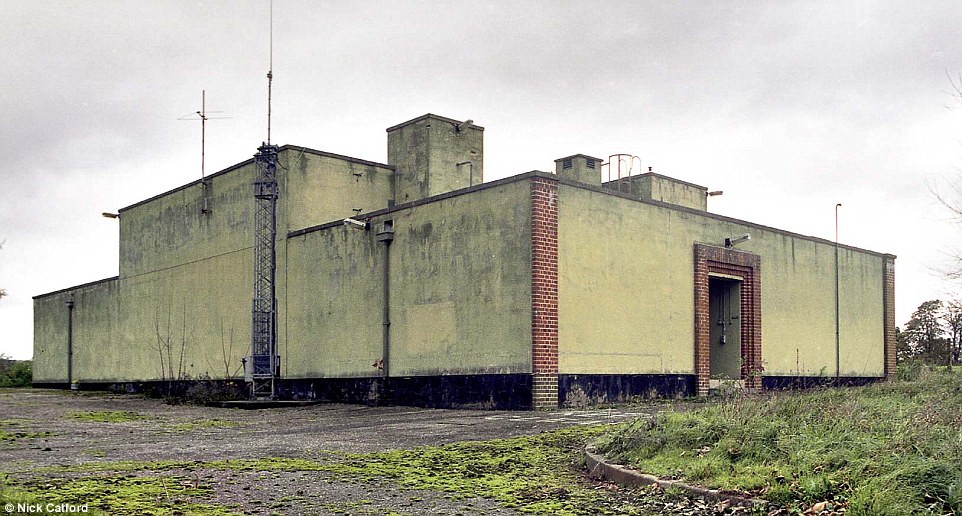
Useful: The nuclear
bunker in Shrewsbury,
Shropshire, has been
turned into a vets'
surgery. There is a
display cabinet with
Cold War relics
inside and a plaque
on the wall - but
although staff can
see the entrance
hatch, they say they
have not ventured
downstairs
Bleak: One of the 29
Royal Observer Corps
headquarters in
Exeter, Devon,
before it was turned
into a
post-apocalyptic
laser tag arena
There are so many it
would be impossible
to fit them all into
one article - so
this one focuses
simply on the 29
specific volunteer
posts.
Some of the
remaining ROC
headquarters have an
uncertain future,
and could be lost
forever. Half of the
posts have already
been demolished
since they were
stood down in 1991,
and others remain
empty and disused
with no law to stop
them being filled
in.
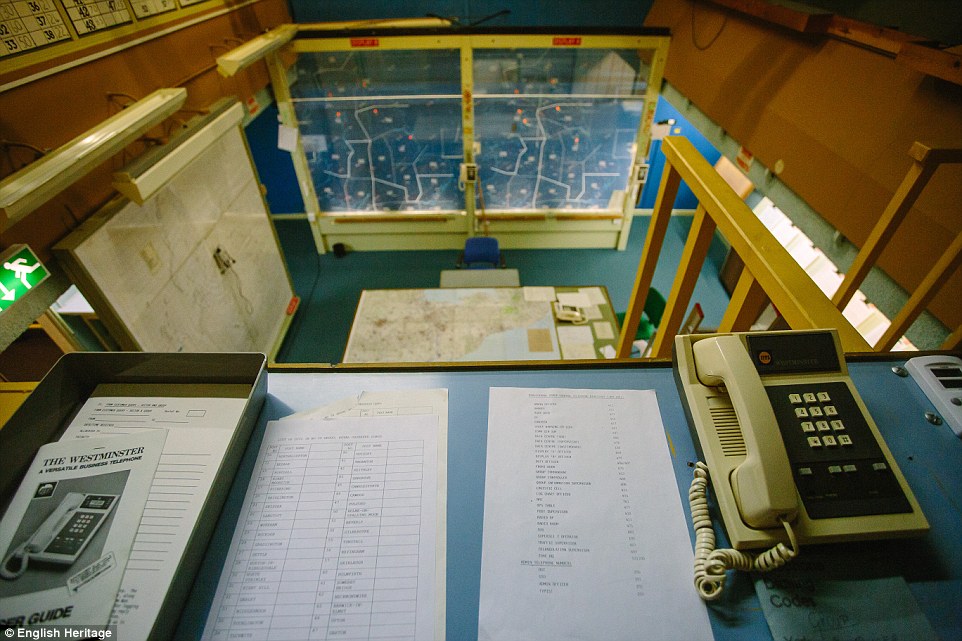
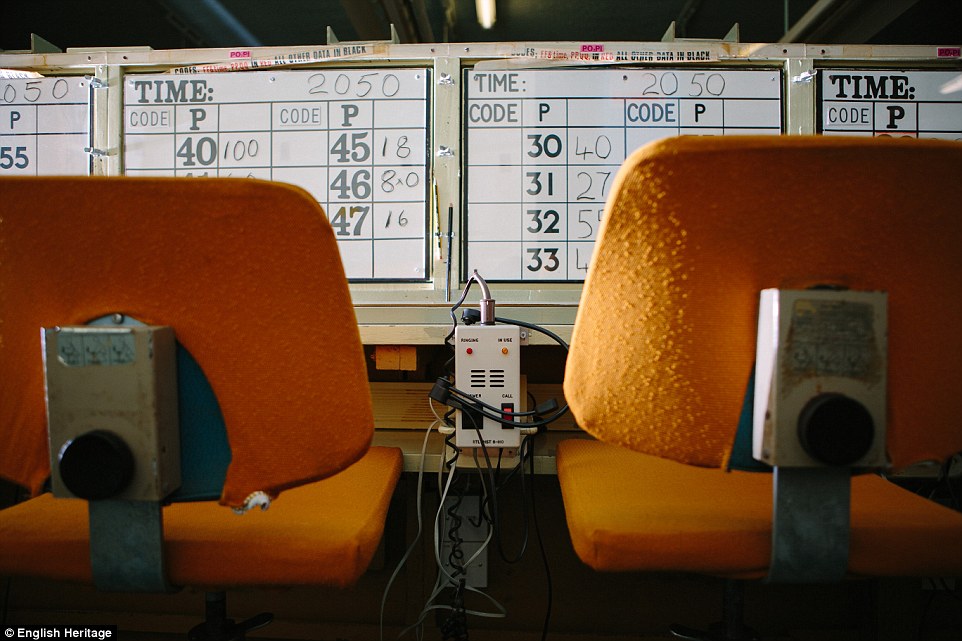
Restored: This ROC
HQ in York is the
only one of its kind
which has been
restored as it used
to be during the
Cold War, thanks to
English Heritage.
Other 'regional
seats of government'
also existed as part
of a separate
network including
two now restored in
Cheshire and Essex
Prepared: Each ROC
HQ could hold 70
volunteers, whose
job was to gather
data on nuclear
fallout and bomb
hits. Pictured: York
English Heritage
properties steward
Ross Macleod, who
looks after the
bunker in York, said:
‘There’s been a
massive revival in
Cold War nostalgia.
We’re seeing people
from schools and the
media. It’s coming
just to that point
where it’s more
history than reality
for a lot of
people.’
‘I honestly think
the remaining ROC
headquarters should
be preserved. I don’t
know if they should
be restored - that’d
be a mammoth
undertaking - but
demolishing any more
of these bunkers
would be a huge
shame.
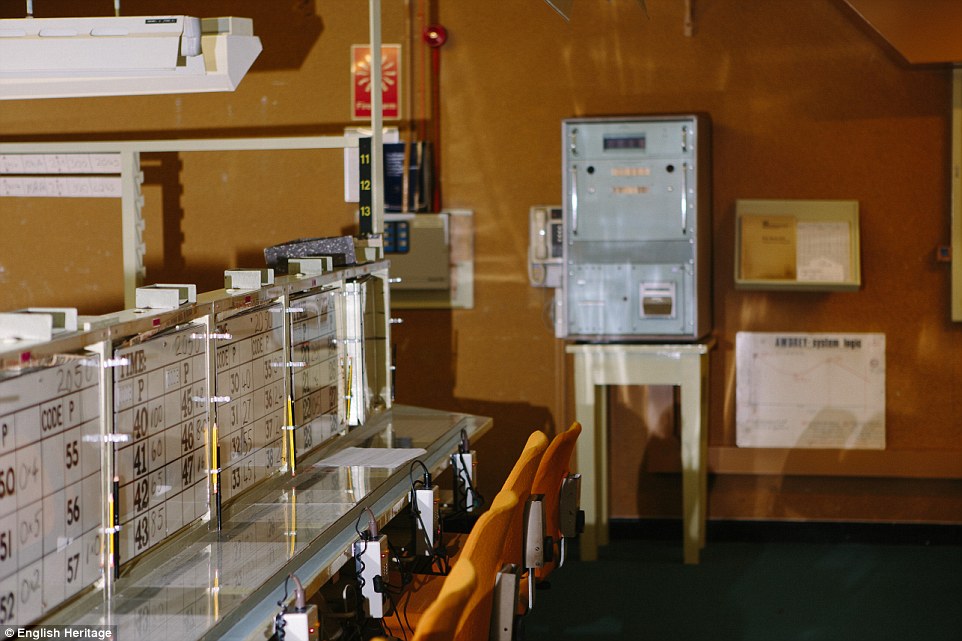
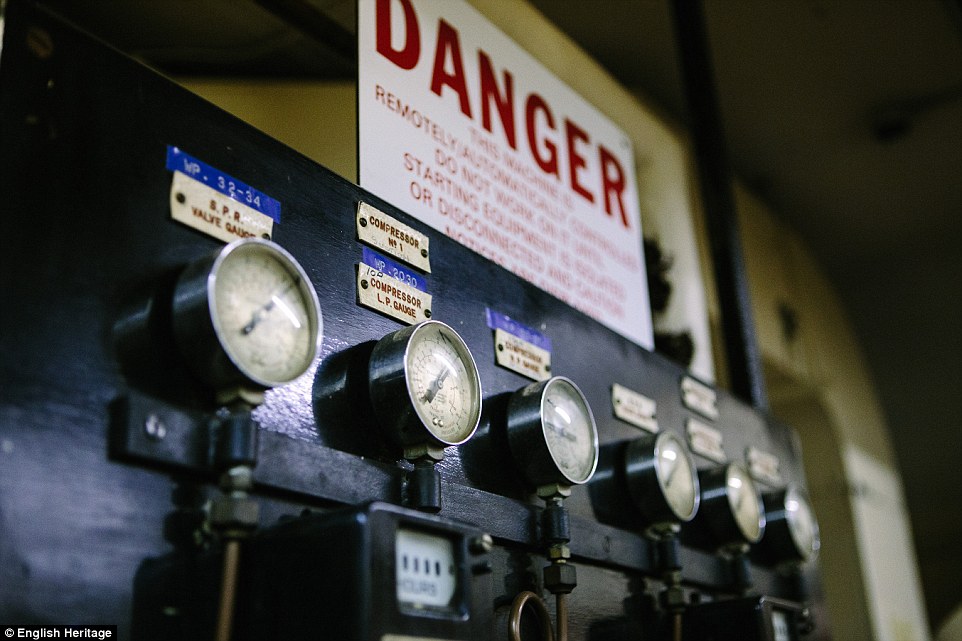
Radio
room: The
information would
have been carried
from these units
along secure phone
lines to regional
government
headquarters
Gauge: Most of the
ROC HQs opened in
1961, but advancing
nuclear technology
cast doubts over
whether they would
have survived
‘It’s a part of
everyone’s history
and it would be sad
to see such key
things representing
such an incredible
bunch of people
disappear.’
The unusual layout
of the fortresses,
however, means it is
often hard to find a
use for them.
Historian Nick
Catford, 62, who
wrote the book Cold
War Bunkers, said: 'Often
you can't buy them
as anything other
than a bunker
because there are so
many restrictions.
You can run them as
museums or leave
them as they were,
but beyond that it
starts to get
tricky'.
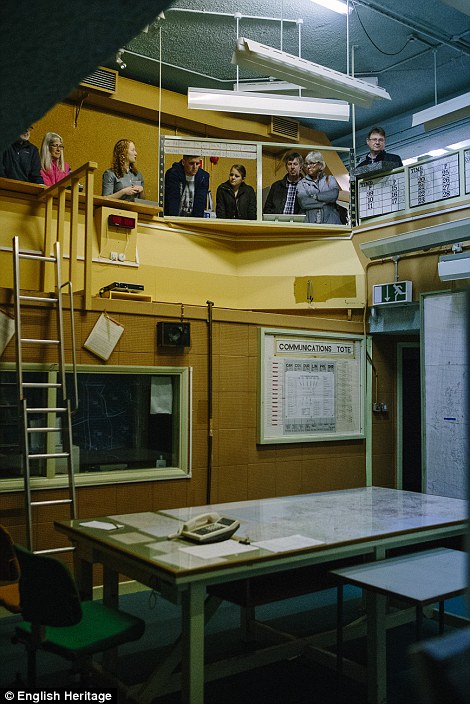
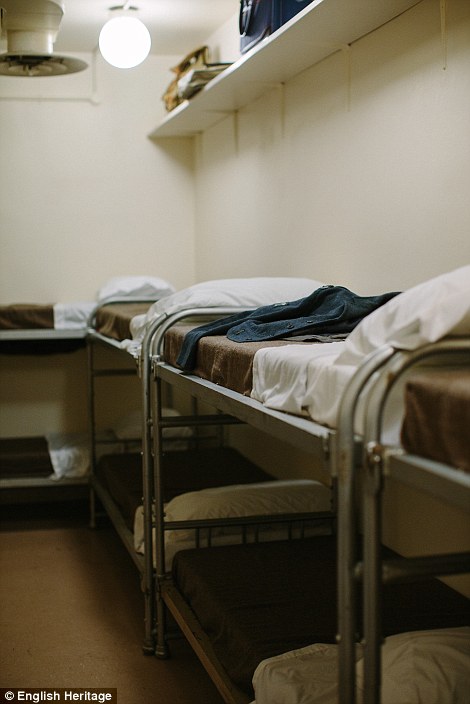
Tours:
The bunker in York
was never used for
war, but it does
host around 5,000
visitors a year -
who can even try out
the bunk beds
That has not stopped
hobbyists pouring
hundreds of
thousands of pounds
into restoring the
surviving ROC sites.
In Borras, north
Wales, musician
David O'Connor
bought one of the
crumbling rural
bunkers and spent
£140,000 turning it
into a 16-room
recording studio
which remixed tracks
for Kylie Minogue
and Rihanna.
'I rented it from a
local farmer and it
hadn't been used for
15 years,' the
46-year-old said. 'It
had phenomenal damp.
All its air
conditioning had
been taken out and
with the walls being
three-and-a-half
feet thick, you can
imagine the state it
was in.'
Some 200 miles away
in Exeter, Devon, is
the only bunker to
have seen warfare -
in pretend form, at
least.
Its concrete walls
now have to
withstand only the
lights of laser tag
guns after it was
converted to host
teenagers' birthday
parties with
infra-red weapons,
sound effects and a
post-apocalyptic
theme.
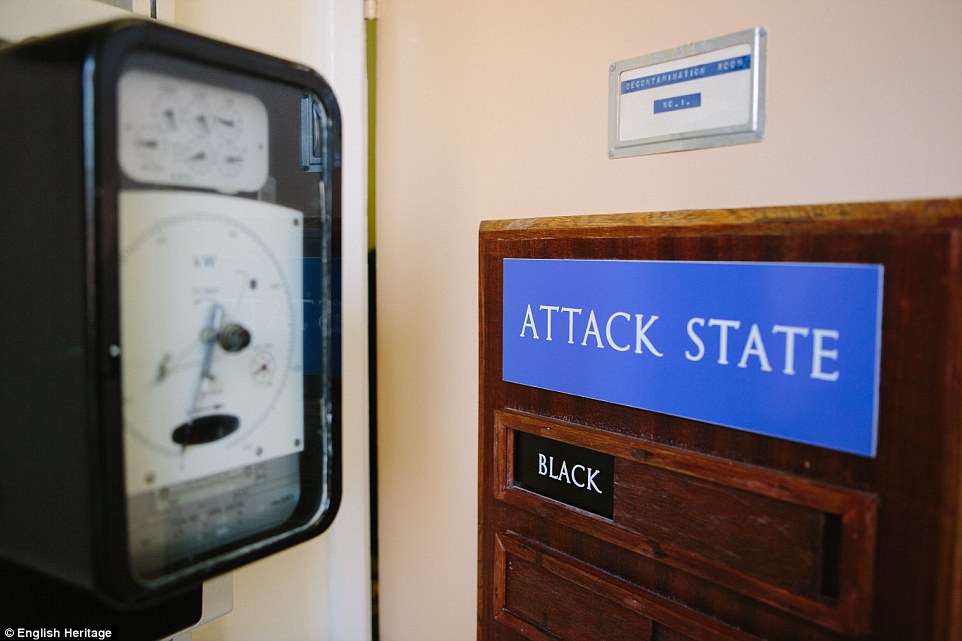
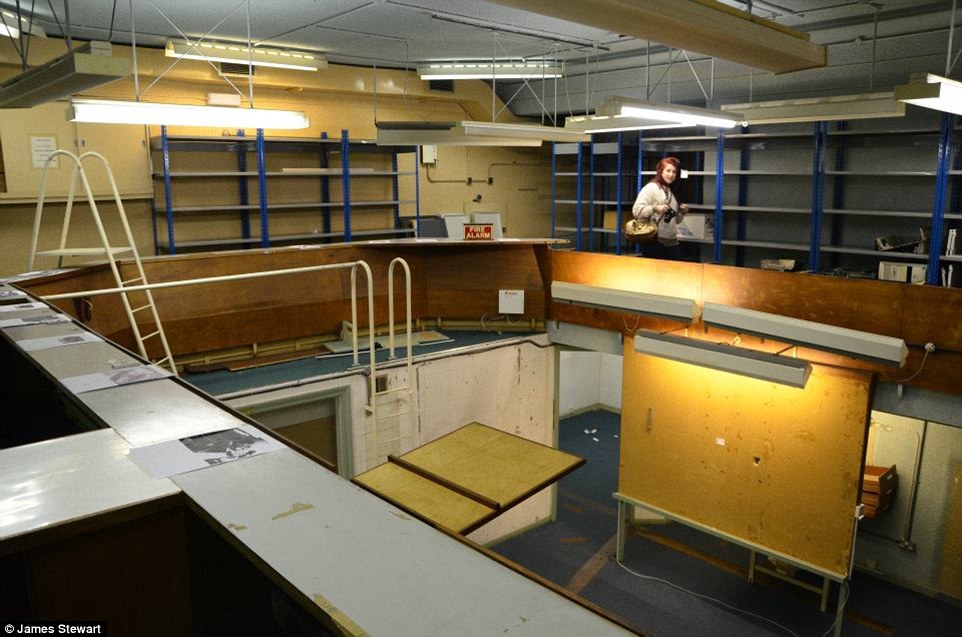

Relief: Thankfully,
despite public
terror, the ROC HQs
were never put to
the test and are now
seeing a revival in
Cold War era
nostalgia
Disused: The inside
of the bunker in
Maidstone, Kent, has
been stripped bare,
and it hosts only
the occasional
curious local
(pictured)
Pristine: Unlike
many of the other
ROC HQs, the one in
Maidstone retains
many of its Cold War
features including
the generator room
Another bunker in
Oban, Argyll and
Bute, is also being
turned into a house,
with views of
Ardmucknish Bay on
one side and Oban's
airstrip on the
other.
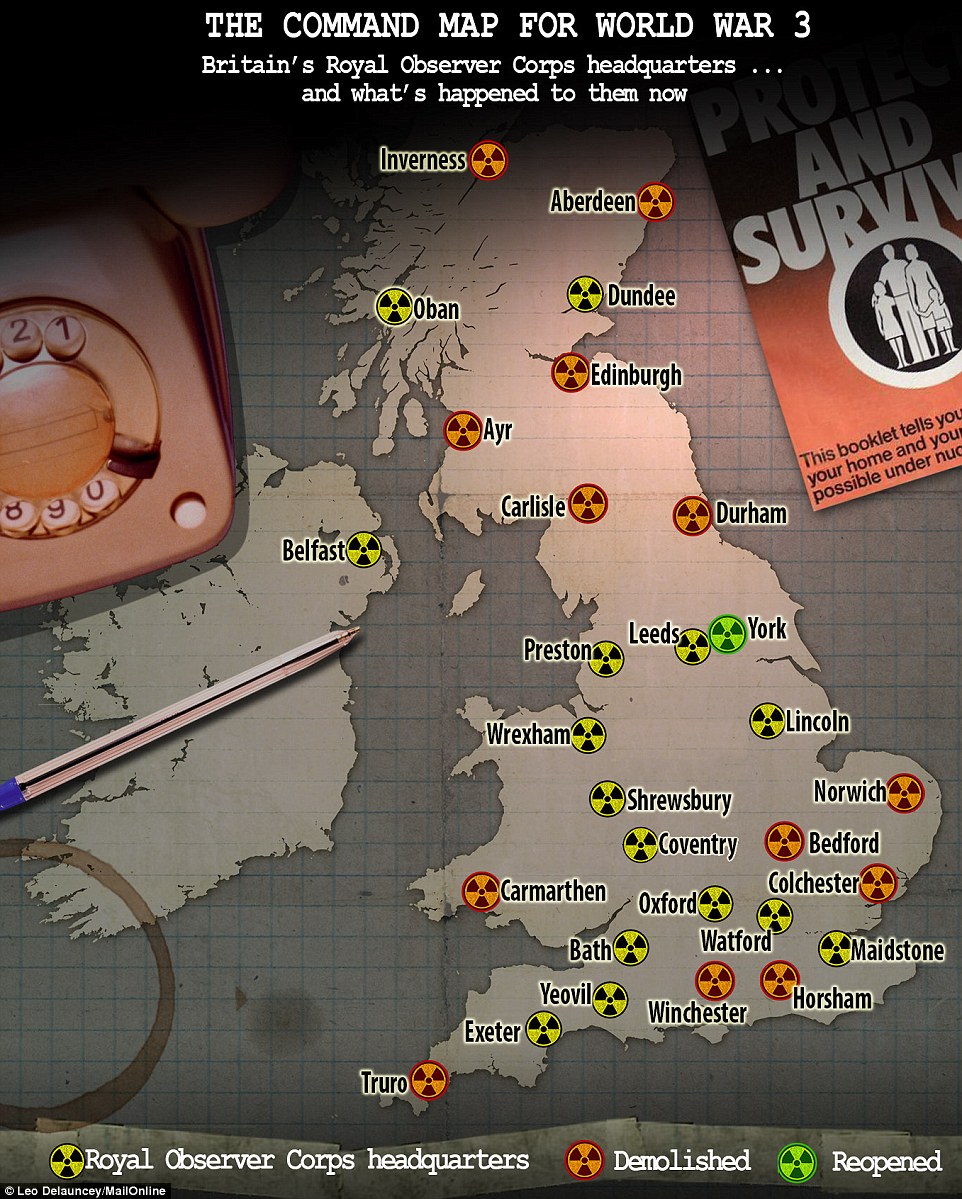
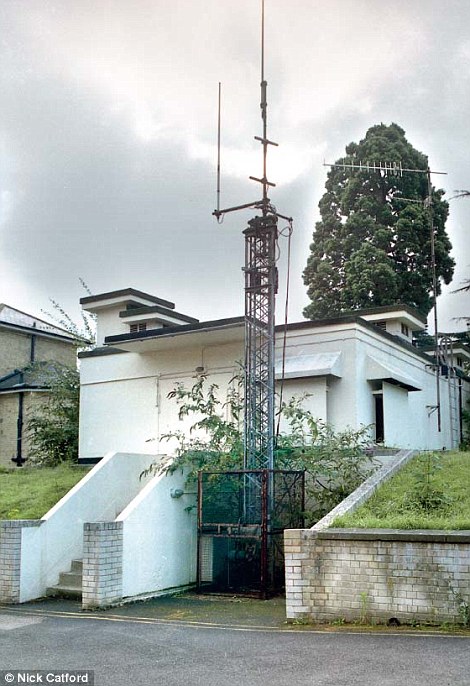
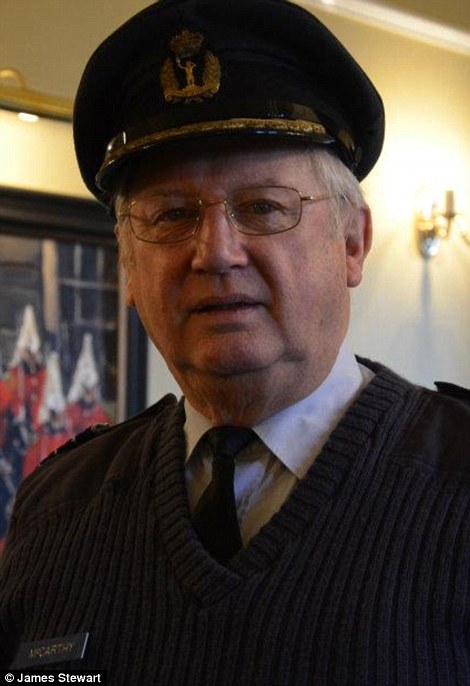
Demise: Almost half
of the 29 ROC
headquarters have
been demolished (in
orange) since
closing down. The
HQs were part of a
larger, complex
network which also
included 11 regional
seats of government,
two of which have
been restored, and
hundreds of tiny
monitoring posts
Bryan McCarthy (right),
now 79, was the
Commanding Officer
of the Maidstone
bunker (left) - and
said it was sad when
the Cold War ended
The owners are
knocking holes in
the reinforced
concrete to build
extra windows and
even plan to
incorporate a granny
flat, though much of
the original
bunker's shell will
remain.
Despite the threat
to their existence,
the value of the
surviving ROC HQs is
only set to rise.
The exploration
group
Subterranea
Britannica, which Mr
Catford helps run,
has seen its
membership blossom
from 200 to 1,200
since the Cold War
ended thanks to
new-found nostalgia.
In their prime, 12
of the 29 ROC HQs
had fully
underground bunkers
with dormitories, a
canteen,
communications,
plant, control and
generator rooms,
toilets, air
filtering and a
decontamination
room.
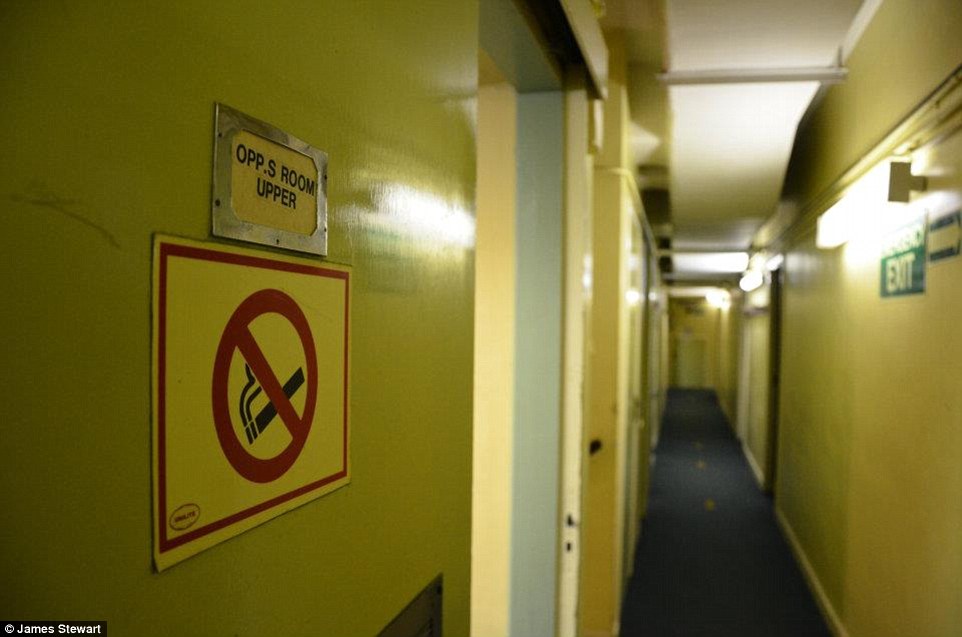
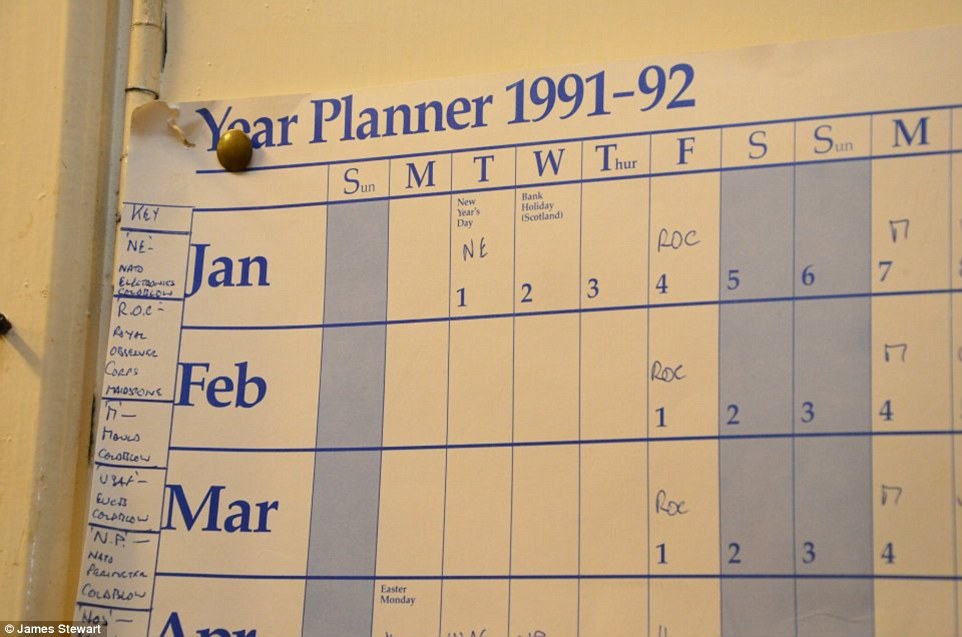
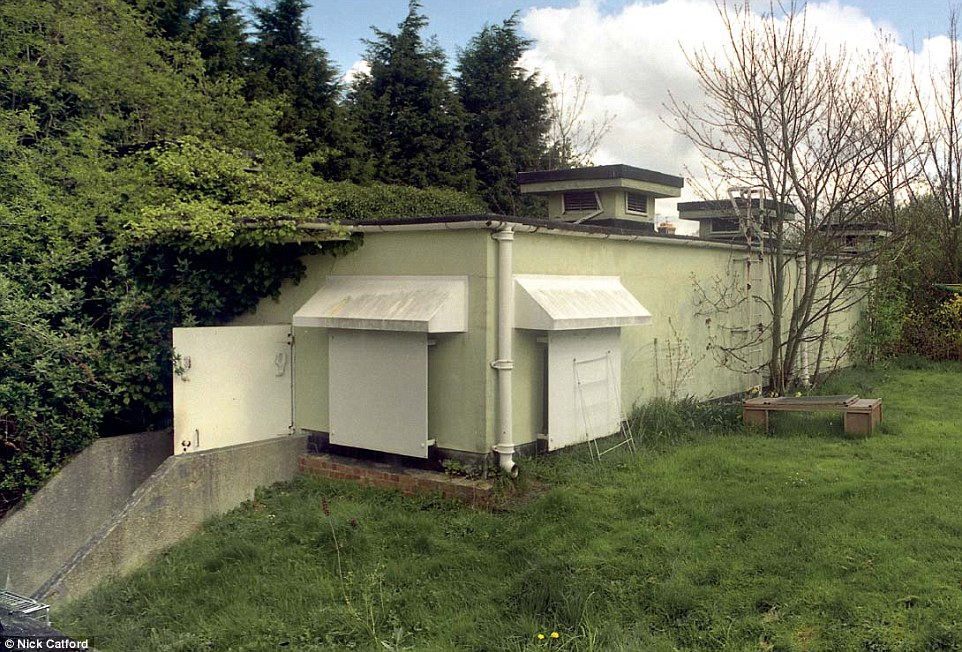
Barren: There were
hopes to turn the
Maidstone bunker
into a recording
studio and storage
space, but they
never came to pass
Frozen in time: A
1991-92 calendar
remains on the wall
of the bunker in
Maidstone, Kent,
whose future could
be uncertain
Disused: This bunker
remains at the rear
of a veterinary
surgery in Watford,
Hertfordshire, where
its use - if any -
remains unknown
The rest had a
surface bunker, with
walls made of
metre-thick
reinforced concrete
which could stand
what the military
called a ‘near miss’:
a two-megaton bomb
falling eight miles
away.
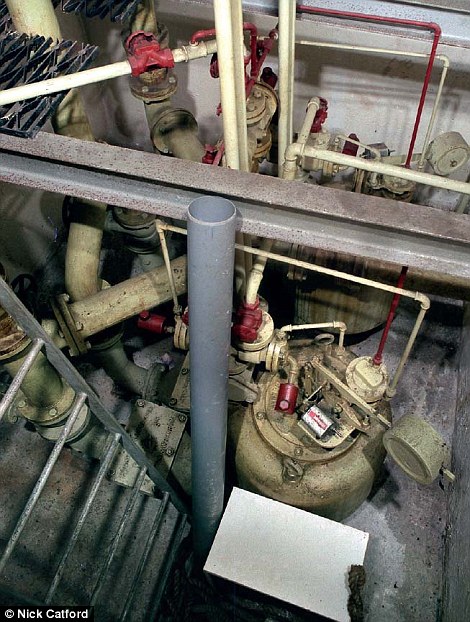
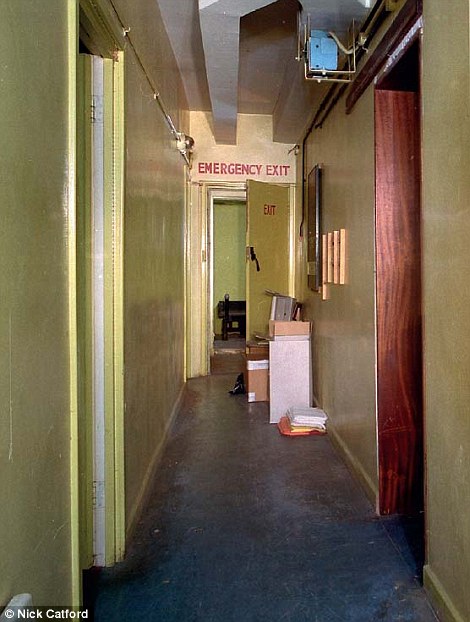
Machinery: The
inside of the
Watford bunker.
Despite Cold War
nostalgia, it is
hard to find a use
for the
unusually-designed
buildings
Along with with
hundreds of tiny
underground
monitoring posts big
enough for just
three people, they
would have plotted
nuclear fallout and
new blasts, sending
their findings
through secure phone
lines to civil
servants in 11
subterranean
regional outposts.
But they were far
from perfect - and
their protection may
have ended up being
sketchy at best.
Within months of the
bunkers entering
service in 1961, the
Soviet Union tested
the world's most
powerful nuclear
weapon at 58
megatons - 24 times
more powerful than
those which would
safety hit eight
miles away.
‘Volunteers were
told up to a third
of the population
could be got to safe
places, and that was
the optimistic view,'
Mr Macleod said.
'The rest would die
or be seriously
injured. Even the
chances of getting a
full staff of 50 to
55 volunteers
through the front
door of each bunker
in the four or five
minutes’ warning the
RAF could give were
very unlikely.’
One ROC HQ in
Maidstone, Kent, had
enough clean water
for just six days,
according to former
commanding officer
Bryan McCarthy.
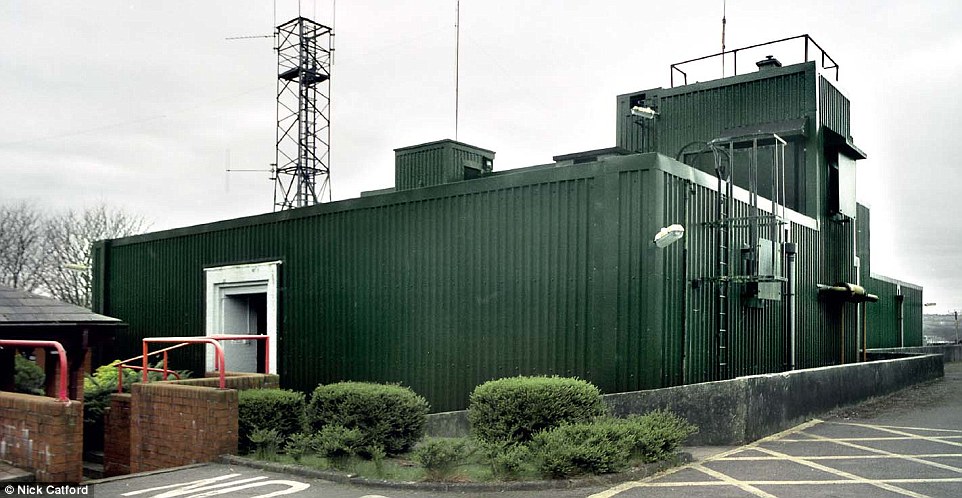
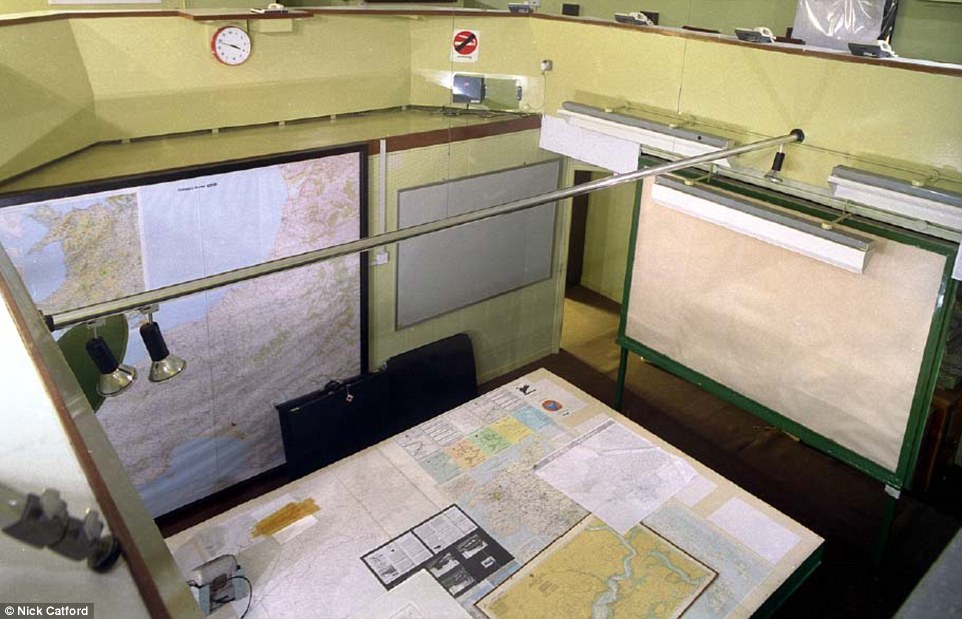
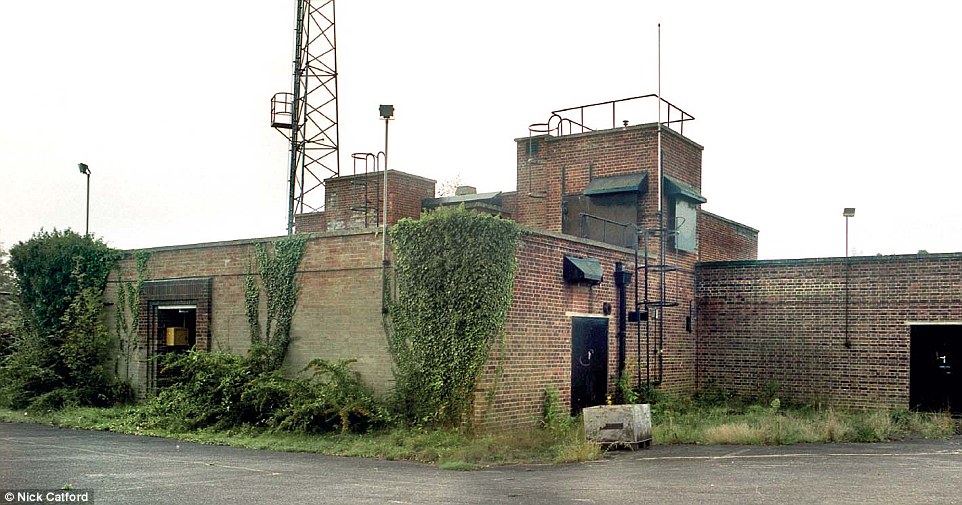
Blending in: This
bunker in Carmarthen
could have passed
for an electricity
substation in its
day. It has since
been demolished
Nerve centre: The
bunkers were
prepared before for
a nuclear war which
could have destroyed
many communications.
Pictured: Carmarthen
Destroyed: Almost
half of the sites
have been demolished
since they closed in
1991, including this
one in Horsham, West
Sussex
The Maidstone bunker
is now in a car park
behind a solicitors'
office - and few
know what to do with
it. An investor
hoped to turn it
into a recording
studio but 'health
and safety' got in
the way, said Mr
McCarthy, a fate
which also befell
the solicitors who
wanted to store
thousands of case
files inside.
Now 79,
grandfather-of-four
Mr McCarthy served
'down the hole' - as
he called it - in
Maidstone for more
than 30 years while
juggling his day job
as a civil engineer.
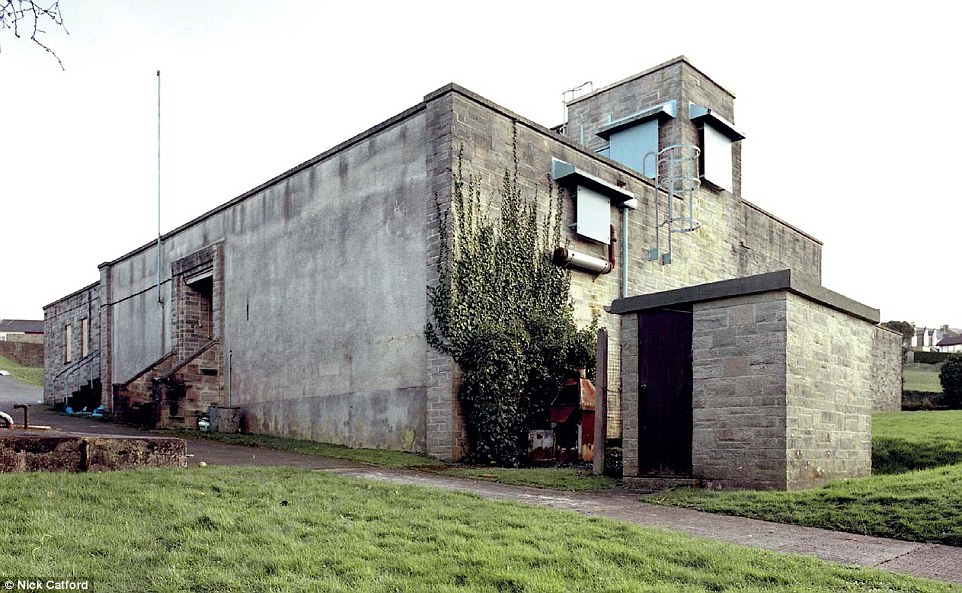
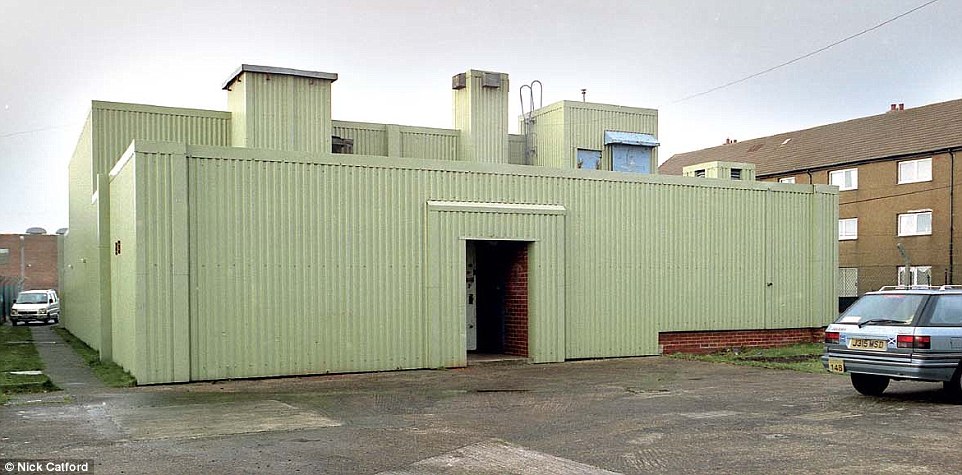
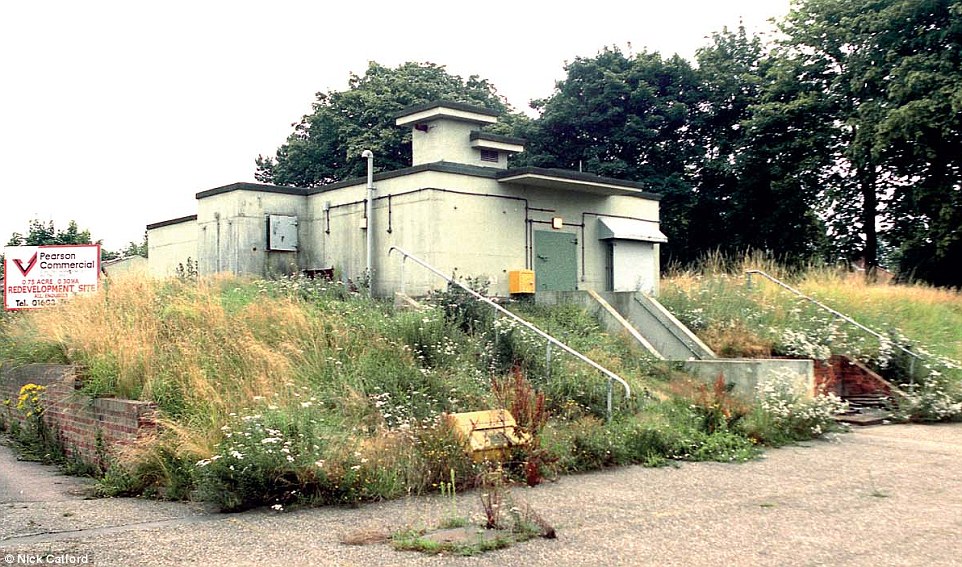
Gone:
Also demolished was
this bleak-looking
bunker in Truro,
Cornwall, despite it
almost beginning to
blend in with nature
Obtrusive: This
now-demolished
nuclear bunker in
the Scottish town of
Ayr stuck out like a
sore thumb in the
middle of a housing
estate
History: This bunker
in Norwich, Norfolk
has also been
destroyed. English
Heritage properties
steward Ross Macleod
said: ‘There’s been
a massive revival in
Cold War nostalgia.
We’re seeing people
from schools. I
think the remaining
ROC headquarters
should be preserved'
By the time the last
bunkers were stood
down in 1991 he had
been in charge for
his home town for
more than a decade,
and also headed up
four other sites in
Colchester, Horsham,
Oxford and
Winchester.
'Everyone in the
Royal Observer Corps
except some of the
officers were
spare-timers', he
said. 'I joined in
1951 when I was 16
years old - I was
there on my 16th
birthday banging on
the door.
'Back in those days
it was all aircraft
reporting - plotting
their courses and
passing the details
on to the RAF. But
by the mid-1950s the
ROC was on its last
legs. Radar was
providing the kind
of stuff to the RAF
that we were
struggling to do as
aircraft flew much
higher and much
faster.'
So in 1957 the Home
Office launched the
UK Warning and
Monitoring
Organisation,
beginning a chain of
events which led the
bunkers to be built.
The UKWMO's crew of
volunteers would be
the first line of
defence if nuclear
bombs started
raining down on
Britain.
'We were realistic,'
he said. 'We knew
you couldn't survive
a nuclear attack no
matter what you did.
But with 50-odd
million people in
the UK, if 10 per
cent survived, there
would be 5million
people out there
wandering around
dazed and confused.
'We were trained to
be able to produce
information that the
authorities could
use to help those
survivors.'
Mr McCarthy, who
served with the RAF
from 1957 to 1959,
spent two or three
nights a week in the
unwelcoming bunker
carrying out
training and dry
runs for a
full-scale nuclear
war. But despite the
preparations, not
everything was
meticulously
thought-out.
'We had an electric
generator which had
enough diesel in it
to last us six
months - but only
enough water to last
six days', he said.
'I would have had to
make a water
rationing scheme
from day one. It's
safe to say we
weren't going to do
much washing.'
Mr McCarthy, who
married his wife
Margaret aged 29,
added: 'Of course we
were scared, but I
wanted to protect my
family as much as I
could and I knew
that to get the ROC
up and running was
the best way. I
couldn't do that if
I was wandering
around dazed and
confused with them.'
Not everyone agreed
with his job. After
one day-long
exercise in the
1970s, he emerged
from the bunker to
find 200 Campaign
for Nuclear
Disarmament
campaigners blocking
his way.
'Another of our
underground
monitoring sites at
Crowborough had a
break-in and they
scrawled "No Trident
Here" on the walls',
he said. 'Well they
were right -
Trident's a
submarine system'.
But Mr McCarthy was
loyal to the Cold
War's bittersweet
end.
'The camaraderie was
exceptional', he
said. 'It was
greatly
disappointing to all
of us when it packed
up. We all missed it,
we really did'.
WAR GAMES: SURVIVING
ROYAL OBSERVER CORPS
NUCLEAR BUNKERS...
AND WHAT'S HAPPENED
TO THEM NOW
GROUP 1 (Maidstone,
Kent): In the car
park of a
solicitors' office;
was used for storage
but is now empty and
hosts occasional
tours
GROUP 3 (Oxford):
Above-ground
buildings were
demolished but the
bunker is still
intact - under a
new-build block of
student flats
GROUP 5 (Watford,
Hertfordshire):
Bunker remains in
the rear car park of
a veterinary surgery;
owner declined to
comment on its use
GROUP 9 (Yeovil,
Somerset): Lay
derelict for many
years - but has now
been turned into a
five-bedroom house
with a timber frame
outside
GROUP 10 (Exeter,
Devon): Was empty
for several years
but has since
reopened as a
post-apocalyptic
laser tag arena run
by UCZ Paintball
GROUP 12 (Bath,
Somerset): Converted
and used as a
conference centre by
the Avon Fire
Brigade
GROUP 15 (Lincoln):
Bunker is now kitted
out as a 'house'
with several
fully-furnished
rooms and used by
police for domestic
incident training
GROUP 16 (Shrewsbury,
Shropshire):
Ground-level
building remains
almost completely
identical - but has
been turned into a
vet's surgery
GROUP 17 (Borras,
north Wales):
Converted in 2005
into a 16-room
recording studio
which has remixed
tracks for Rihanna
and Kylie Minogue
GROUP 20 (York):
Bought by English
heritage and fully
restored, this is
the only ROC HQ of
its kind which is
open as a
fully-fledged
tourist attraction
GROUP 21 (Goosnargh,
Lancashire): Was
bought by another
vets' surgery but
has since been sold
to a private owner
in Cheshire
GROUP 27 (Oban,
Argyll & Bute):
Currently being
converted into a
family home with a
granny flat, large
windows and views of
Ardmucknish Bay
GROUP 28 (Dundee): A
housing estate was
built around it - so
the bunker was
disguised with a
brick and
pebbledash-clad 'sham
house'
GROUP 31 (Lisburn,
Co. Antrim): The
bunker was built on
an operational Army
base and remains
there, being used
occasionally by the
military
 Zweibrücken
(aw). Eine Horde Gamer verschwindet in einem
ehemaligen Bunker aus Tausenden Tonnen Stahlbeton um
gemeinsam eine zünftige LAN abzuhalten. Was wie eine
futuristische Vision klingt, soll jetzt Realität
werden. Der Fachinformatiker und Systemadministrator
Fabian Krüger möchte gemeinsam mit sechs Freunden
den ehemaligen NATO-Bunker in Zweibrücken (Rheinland-Pfalz)
im Industriegebiet West nahe der A8 kaufen und in
einen Gamertreff unter dem Motto „Der Bunker – Play.
Stream. Eat. Repeat“ umwandeln. Hier sollen auf
2.200 Quadratmetern LAN-Partys, Technical/Gaming
Previews, Streamings, ein Rechenzentrum, FPV,
Cosplay, Paintball, Bistros, Shops, Grillplätze und
Chillout-Zonen entstehen und stattfinden. Finanziert
werden soll das Ganze durch Spenden aus dem
Internet. Am 1. November ist die Crowdfunding-Aktion
gestartet. Nun wollen die „Visionäre“ bis Ende des
Monats 1,5 Millionen Euro einsammeln – eine
Mammutsumme. Die Gegenleistungen für die Crowd
bestehen aus mehreren Paketen, beginnend bei 5 Euro
und steigend bis 7.000 Euro. Mit dem möglichen
eingenommenen Geld möchte das Team das Grundstück
kaufen und die Renovierung des Bunkers durchführen.
Zweibrücken
(aw). Eine Horde Gamer verschwindet in einem
ehemaligen Bunker aus Tausenden Tonnen Stahlbeton um
gemeinsam eine zünftige LAN abzuhalten. Was wie eine
futuristische Vision klingt, soll jetzt Realität
werden. Der Fachinformatiker und Systemadministrator
Fabian Krüger möchte gemeinsam mit sechs Freunden
den ehemaligen NATO-Bunker in Zweibrücken (Rheinland-Pfalz)
im Industriegebiet West nahe der A8 kaufen und in
einen Gamertreff unter dem Motto „Der Bunker – Play.
Stream. Eat. Repeat“ umwandeln. Hier sollen auf
2.200 Quadratmetern LAN-Partys, Technical/Gaming
Previews, Streamings, ein Rechenzentrum, FPV,
Cosplay, Paintball, Bistros, Shops, Grillplätze und
Chillout-Zonen entstehen und stattfinden. Finanziert
werden soll das Ganze durch Spenden aus dem
Internet. Am 1. November ist die Crowdfunding-Aktion
gestartet. Nun wollen die „Visionäre“ bis Ende des
Monats 1,5 Millionen Euro einsammeln – eine
Mammutsumme. Die Gegenleistungen für die Crowd
bestehen aus mehreren Paketen, beginnend bei 5 Euro
und steigend bis 7.000 Euro. Mit dem möglichen
eingenommenen Geld möchte das Team das Grundstück
kaufen und die Renovierung des Bunkers durchführen.

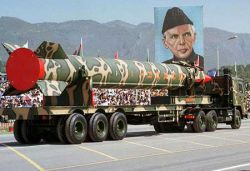
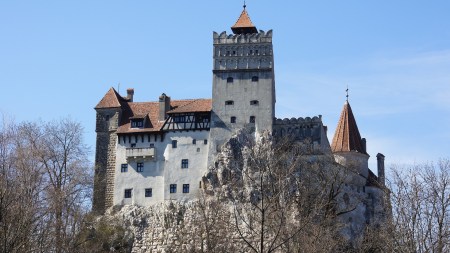
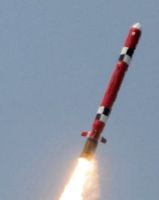 South
Korea in a move to
counter North
Korea’s advancing
nuclear and a
missile capability
is insistent to
finish the
development of
ballistic missiles
with range of 800
kilometers by 2017.
South
Korea in a move to
counter North
Korea’s advancing
nuclear and a
missile capability
is insistent to
finish the
development of
ballistic missiles
with range of 800
kilometers by 2017.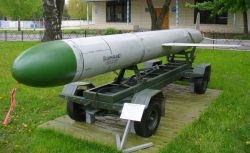
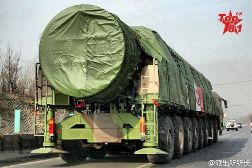
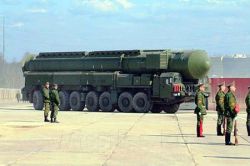 China's
7000 miles range
DF-41 ballistic
missile could become
operational as early
as this year.
Beijing reportedly
conducted a flight
test on August 6 of
its long-range
missile that
launched two
independently-targeted
simulated nuclear
warheads,
freebeacon.com, a US
based politics
website said quoting
unnamed US officials.
China's
7000 miles range
DF-41 ballistic
missile could become
operational as early
as this year.
Beijing reportedly
conducted a flight
test on August 6 of
its long-range
missile that
launched two
independently-targeted
simulated nuclear
warheads,
freebeacon.com, a US
based politics
website said quoting
unnamed US officials.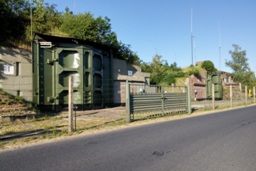




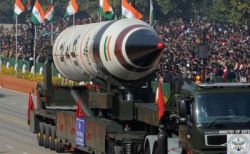 India
test-fired its
nuclear capable
ballistic missile
‘Agni-5', which can
strike targets over
5,000 km and can
carry a nuclear
warhead of over one
tonne, from a launch
centre in the
country’s east coast.
India
test-fired its
nuclear capable
ballistic missile
‘Agni-5', which can
strike targets over
5,000 km and can
carry a nuclear
warhead of over one
tonne, from a launch
centre in the
country’s east coast.